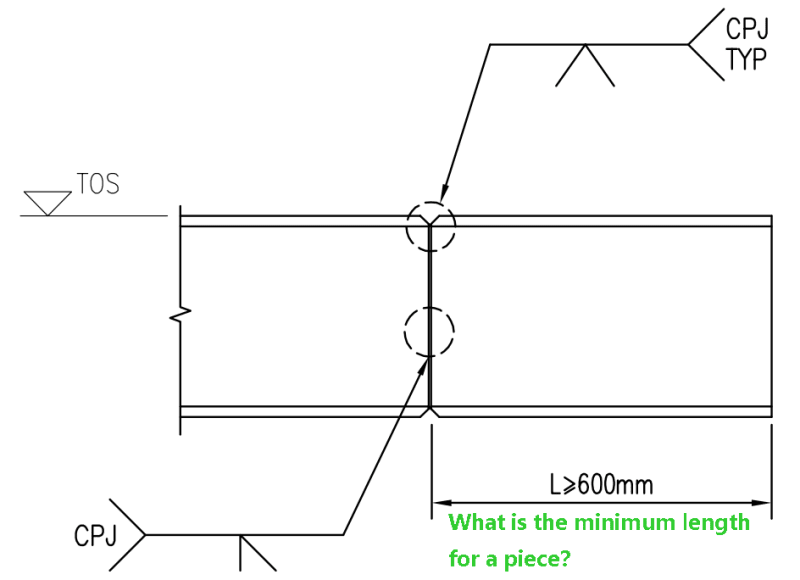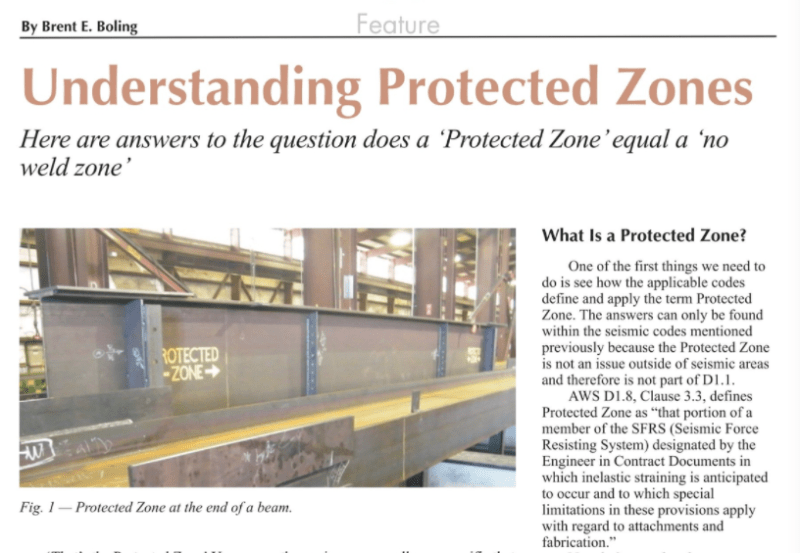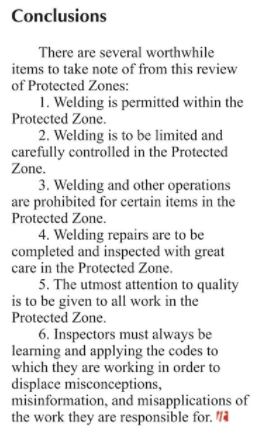Navigation
Install the app
How to install the app on iOS
Follow along with the video below to see how to install our site as a web app on your home screen.
Note: This feature may not be available in some browsers.
More options
Style variation
-
Congratulations TugboatEng on being selected by the Eng-Tips community for having the most helpful posts in the forums last week. Way to Go!
You are using an out of date browser. It may not display this or other websites correctly.
You should upgrade or use an alternative browser.
You should upgrade or use an alternative browser.
What is the minimum length for a member piece in splice connection?
- Thread starter tmgczb
- Start date
- Status
- Not open for further replies.
CELinOttawa
Structural
I don't see any reason to have a minimum distance, if you're using a Complete Penetration Joint. That's the point; it is complete and should be equal in performance to the original.
I'm entirely ready to be corrected and learn something today... The analogy in a reinforced concrete frame would have a lot of limitations (hinges, developments, etc.), but I don't see an equivalent in steel.
Anybody?
P.S. Also: Did you mean beam?
I'm entirely ready to be corrected and learn something today... The analogy in a reinforced concrete frame would have a lot of limitations (hinges, developments, etc.), but I don't see an equivalent in steel.
Anybody?
P.S. Also: Did you mean beam?
I believe there are restrictions for seismic design. I don't think you can have a splice in a "protected zone", which are areas where you are depending on predictable plastic deformation and/or strength to resist seismic forces and/or dissipate energy.
But it's been a while since I messed with that, so check AISC 341 if that's a point of concern.
But it's been a while since I messed with that, so check AISC 341 if that's a point of concern.
- Thread starter
- #4
phamENG said:Indeed there is. It gives requirement of distance between column splice and beam-to-column flange connection. Thank you very much.
CELinOttawa
Structural
Well then; I've learnt something today! Thanks all... Definitely something to keep an eye on. Seems to affect the fabricators most, but we need to ensure that these zones are suitably protected.
S16 doesn't appear to have instructions or guidance for showing this; are you simply showing the range and openly stating "protected zone"?
S16 doesn't appear to have instructions or guidance for showing this; are you simply showing the range and openly stating "protected zone"?
Last time it impacted me was a few years ago so I don't remember all the particulars - cantilevered column lateral system for a gas station canopy. So the protected zone was the bottom X feet of the column. I just put a detail on the drawing showing a dimension with a hatched region and said "Seismic protected zone - no holes, welds, splices, etc. in this region" (or something to that effect). It was particularly important since everyone wanted to put downspouts and conduit inside the column and come out 6" above grade.
- Thread starter
- #8
phamENG said:Very good experience.Where is the gas station located?
By the book, I believe that you can do a CJP splice in a protected zone so long as those welds are treated as demand critical welds. In many instances, the column to base plate welds will be demand critical welds within the protected zone. That said, I'd want a pretty good reason to justify having a second set of demand critical welds in close proximity and within the protected zone before I'd be willing to do it.
Protected zones are usually (roughly) 2x the beam depth for moment frames, and L/4 of braces in braced frames (I think...maybe L/8?) and the gussets of braced frames (typically intermediate and special systems, and BRBFs). SidePlate connections also have very particular protected zones in the most highly stressed portions of the connection assembly.
They're more for preventing other trades from making incidental attachments to the steel in the yielding portions of moment frame beams and braces and/or gussets of braced frames. "known" attachments in the zone are allowed, like headed studs for composite beams, welding deck edge angles, puddle welds, that sort of 'minimally invasive' attachment.
E.g., the metal stud contractor ALWAYS wants to attach metal studs to braces with PAFs. Which is fine, as long as it's outside of the protected zone. That sort of attachment (or a MEP contractor drilling through a flange for a pipe hanger or whatever) can cause stress concentrations and lead to fractures which would/will compromise the integrity of the SFRS.
Tons of special requirements for demand critical welds and generally any member of SFRS. Materials must conform to specific toughness requirements (v-notch tests etc), specific dimensional requirements for the cuts and bevels, smoothness of the welded surface. It'll make your head spin.
They're more for preventing other trades from making incidental attachments to the steel in the yielding portions of moment frame beams and braces and/or gussets of braced frames. "known" attachments in the zone are allowed, like headed studs for composite beams, welding deck edge angles, puddle welds, that sort of 'minimally invasive' attachment.
E.g., the metal stud contractor ALWAYS wants to attach metal studs to braces with PAFs. Which is fine, as long as it's outside of the protected zone. That sort of attachment (or a MEP contractor drilling through a flange for a pipe hanger or whatever) can cause stress concentrations and lead to fractures which would/will compromise the integrity of the SFRS.
Tons of special requirements for demand critical welds and generally any member of SFRS. Materials must conform to specific toughness requirements (v-notch tests etc), specific dimensional requirements for the cuts and bevels, smoothness of the welded surface. It'll make your head spin.
To my knowledge, AISC 341 does not have any specific requirements for beam splice locations--it does for columns, see below--but logically they should be located away from the hinge region. In fact, I think one could argue that everything within the protected zone at the beam-column connection is part of the prequalification required by AISC 358, and introducing a beam splice in that region would invalidate the prequalification.
dold: Minor correction...the only attachments permitted in protected zones are puddle welds and PAFs to secure the deck. Shear studs and edge angle welds are not permitted, see below from AISC 341. I haven't gone through each connection in AISC 358 to see if there are any exceptions, but for the connections we commonly use there are none.
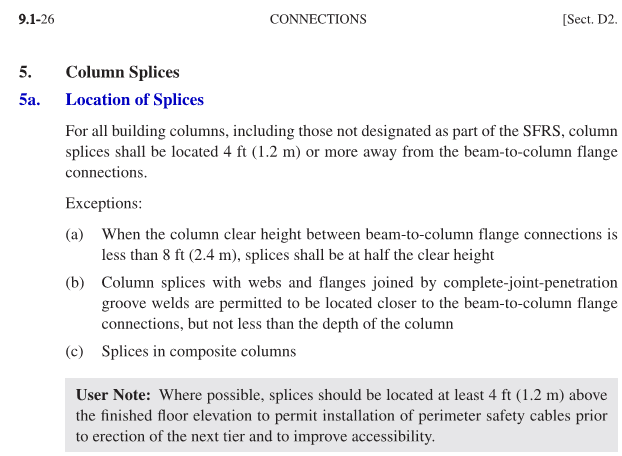
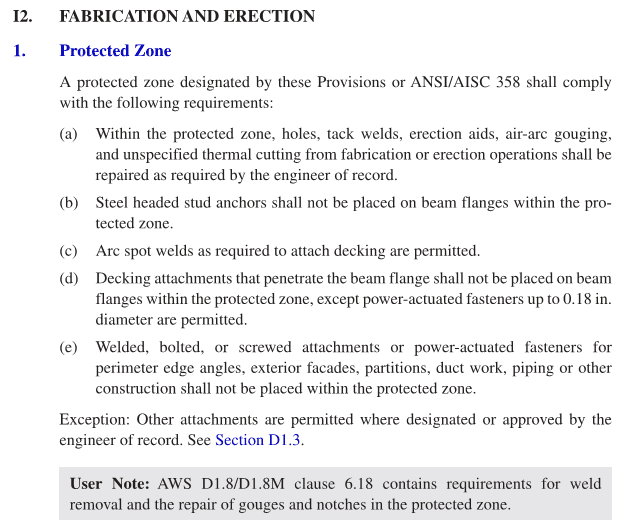
dold: Minor correction...the only attachments permitted in protected zones are puddle welds and PAFs to secure the deck. Shear studs and edge angle welds are not permitted, see below from AISC 341. I haven't gone through each connection in AISC 358 to see if there are any exceptions, but for the connections we commonly use there are none.


I suspect that the PAF allowance for deck attachment is more just a nod to practicality than anything else. After all, you'd surely want some kind deck attachment for deck erection safety.
For what it's worth, my previous responses all assumed that "column base" meant the connection to the foundation. I hadn't considered column splices at suspended floor levels. Although, when I look at the sketch again, I almost wonder if we're not actually talking about a beam here...
For what it's worth, my previous responses all assumed that "column base" meant the connection to the foundation. I hadn't considered column splices at suspended floor levels. Although, when I look at the sketch again, I almost wonder if we're not actually talking about a beam here...
- Status
- Not open for further replies.
Similar threads
- Question
- Replies
- 21
- Views
- 5K
- Locked
- Question
- Replies
- 3
- Views
- 3K
- Question
- Replies
- 1
- Views
- 7K
- Locked
- Question
- Replies
- 1
- Views
- 3K
- Replies
- 16
- Views
- 3K

